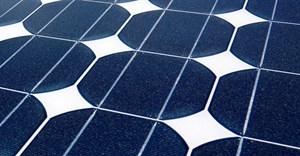
Related


Discovery enters renewable power trading
Promit Mukherjee 6 Sep 2023

Solar thermal: an opportunity for SA's food, beverage industries
Louise Scholtz 20 Jul 2018

Is carpooling the future of urban mobility?
Chris Megan 24 Aug 2017




"Copper plays an important role in renewable energy systems. Since it is the highest rated electrical conductor among the engineering metals, power systems that utilise copper generate and transmit energy with maximum efficiency and with minimum environmental impacts. By using copper, less electricity needs to be generated to satisfy a given power demand," explains Copper Development Association Africa's (CDAA) centre director, Evert Swanepoel.
The sun delivers almost four million exajoules (EJ) of energy to the earth, and various technologies are being developed to exploit this huge energy source. Solar photovoltaics (PV) is an important technology that harnesses the sun's power to generate electricity. It works by converting solar radiation into direct current electricity using semiconductors that exhibit the photovoltaic effect (the creation of electrical current in a material upon exposure to light). PV power generation uses solar panels composed of a number of solar cells containing a PV material including, amongst others, copper indium gallium selenide/sulfide.
Swanepoel continues: "Photovoltaic systems can produce enough electrical power to run entire households and, in some cases, the electricity generated can be sold back to utilities. The usage of copper in photovoltaic systems is substantial. Not only is it used in the production of the PV panels, it can be found in all the connecting wires, pegs, cables inverters, plates, ribbons, windings and circuit boards, which convert the 12 volts of power generated to the 220 volts required for home usage."
The sun's solar energy can also be harnessed for its heat, with solar water heaters and space heating being its most well-known applications. When investigating solar thermal installations, choosing the right pipework material is a particularly important part of the specification process. Copper piping can meet the high demands of solar thermal systems, which can reach high temperatures of over 200 degrees Celsius. Unlike other metals, copper is capable of handling water and other fluids, such as those found in solar thermal systems, at these high temperatures.
Solar domestic hot water systems can be an ecological and cost-effective way to generate hot water for homes, as the fuel they use, sunshine, is free. According to the Renewables 2012: Global status report, solar hot water collectors are used by more than 200 million households as well as many public and commercial buildings worldwide.
"This entire concept is still new and expensive in South Africa and rooftop solar-powered geyser installations may be the way to go. House builders and home owners alike are being encouraged to think about renewable energy sources and solar thermal systems are proving to be an attractive option. Copper is already the first choice for domestic plumbing and heating systems; now its properties can be put to great use in solar thermal installations," concludes Swanepoel.
For more information, go to www.copperalliance.org.za.
